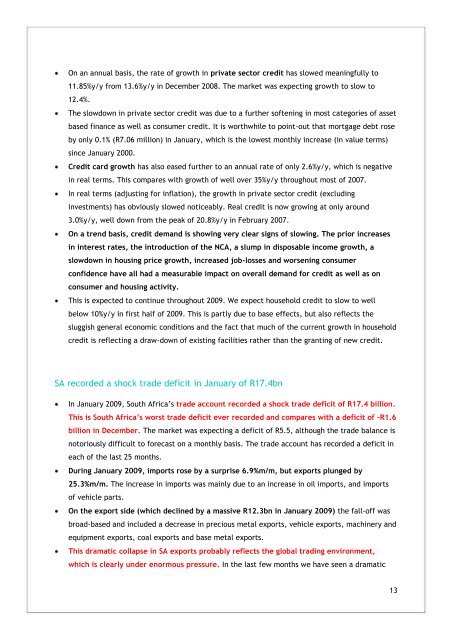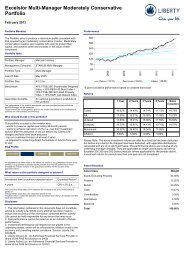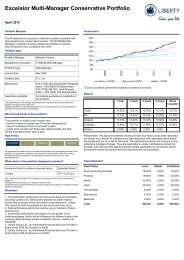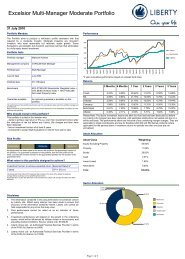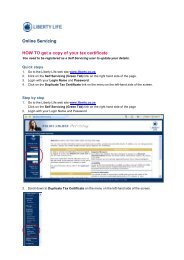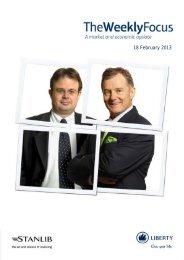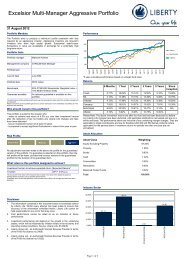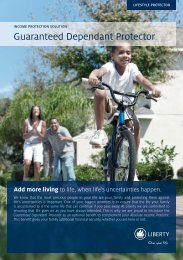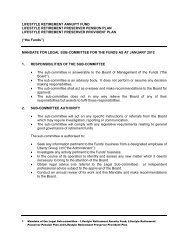You also want an ePaper? Increase the reach of your titles
YUMPU automatically turns print PDFs into web optimized ePapers that Google loves.
On an annual basis, the rate of growth in private sector credit has slowed meaningfully to11.85%y/y from 13.6%y/y in December 2008. The market was expecting growth to slow to12.4%.The slowdown in private sector credit was due to a further softening in most categories of assetbased finance as well as consumer credit. It is worthwhile to point-out that mortgage debt roseby only 0.1% (R7.06 million) in January, which is the lowest monthly increase (in value terms)since January 2000.Credit card growth has also eased further to an annual rate of only 2.6%y/y, which is negativein real terms. This compares with growth of well over 35%y/y throughout most of 2007.In real terms (adjusting for inflation), the growth in private sector credit (excludinginvestments) has obviously slowed noticeably. Real credit is now growing at only around3.0%y/y, well down from the peak of 20.8%y/y in February 2007.On a trend basis, credit demand is showing very clear signs of slowing. The prior increasesin interest rates, the introduction of the NCA, a slump in disposable income growth, aslowdown in housing price growth, increased job-losses and worsening consumerconfidence have all had a measurable impact on overall demand for credit as well as onconsumer and housing activity.This is expected to continue throughout 2009. We expect household credit to slow to wellbelow 10%y/y in first half of 2009. This is partly due to base effects, but also reflects thesluggish general economic conditions and the fact that much of the current growth in householdcredit is reflecting a draw-down of existing facilities rather than the granting of new credit.SA recorded a shock trade deficit in January of R17.4bnIn January 2009, South Africa‟s trade account recorded a shock trade deficit of R17.4 billion.This is South Africa’s worst trade deficit ever recorded and compares with a deficit of –R1.6billion in December. The market was expecting a deficit of R5.5, although the trade balance isnotoriously difficult to forecast on a monthly basis. The trade account has recorded a deficit ineach of the last 25 months.During January 2009, imports rose by a surprise 6.9%m/m, but exports plunged by25.3%m/m. The increase in imports was mainly due to an increase in oil imports, and importsof vehicle parts.On the export side (which declined by a massive R12.3bn in January 2009) the fall-off wasbroad-based and included a decrease in precious metal exports, vehicle exports, machinery andequipment exports, coal exports and base metal exports.This dramatic collapse in SA exports probably reflects the global trading environment,which is clearly under enormous pressure. In the last few months we have seen a dramatic13


